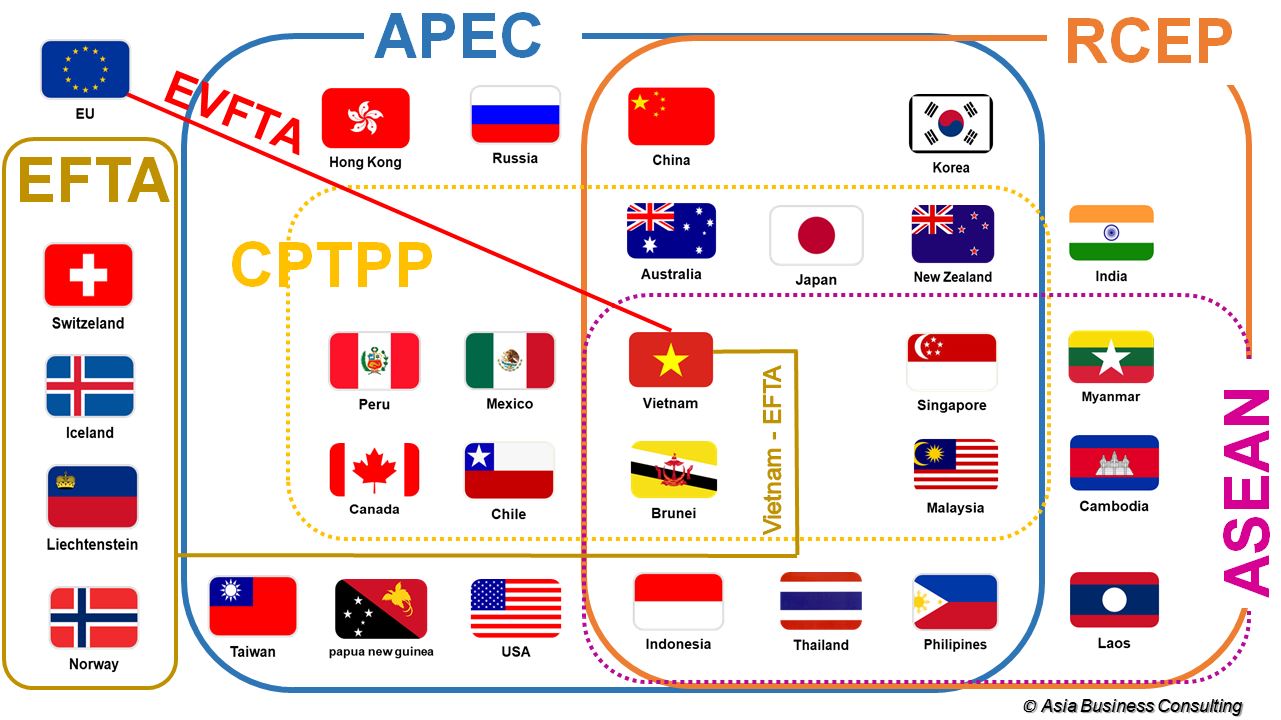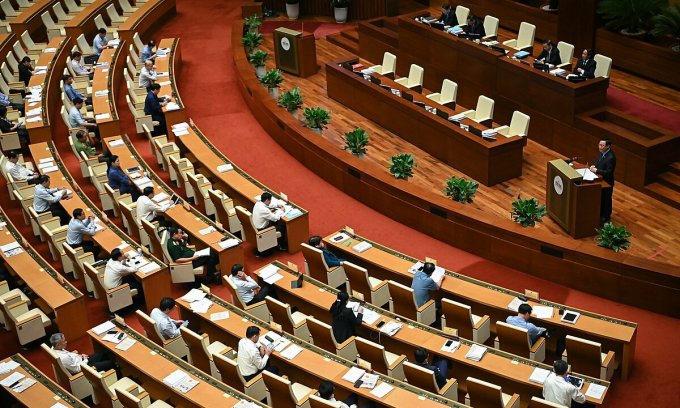International Trade Agreement under Vietnam law

The development of international trade requires countries to have a common legal mechanism to adjust in a unified and reasonable manner in the balance of each other’s interests, which leads to the inevitable birth of international trade agreements. We can easily find a trade agreement, but from a theoretical perspective, there seems to be no official definition yet. So about the matter “International Trade Agreement under Vietnam law” Let’s find out with LSX in the article below.
What is a trade agreement?
A trade agreement is an agreement between countries on a trade relationship. More specifically, a trade agreement is the product of negotiations and discussions between two or more sovereign countries that stipulate the terms of an acceptable exchange of goods and services between the parties. As sovereign states, each of the roughly 200 countries in the world has the right to say what they will allow into their country. Each country recognizes, albeit to varying degrees, that they cannot exist as outright establishmentists. As soon as the possibility of trade between the two countries became clear, normal trade negotiations began.
For most countries, international trade is governed by several types of unilateral barriers, including tariffs, non-tariff barriers, and outright bans. Trade agreements are one way to reduce these barriers, thereby opening up to all parties the benefits of increased trade.
In most modern economies, the possible alliances of interest groups are numerous, and the variety of possible unilateral barriers are substantial. Furthermore, some barriers to trade are created for other, non-economic reasons, such as national security or the desire to preserve or insulate local culture from foreign influence. So it is not surprising that successful trade agreements are complex.
Trade agreements can be bilateral or multilateral – that is, between two or more countries:
Bilateral agreements with the participation of two countries. Both countries agreed to relax trade restrictions to expand business opportunities between them. They lower tariffs and give each other preferential trade status. The sticking point often revolves around key domestic industries that are protected or subsidized by the government. For most countries, they are in the automotive, oil or food manufacturing industries. The Obama administration is negotiating the world’s largest bilateral deal, the Transatlantic Trade and Investment Partnership with the European Union, but this has stalled under the Trump administration.
– These agreements between three or more countries are the most difficult to negotiate. The larger the number of participants, the more difficult the negotiation. In essence, they are more complex than bilateral agreements, as each country has its own needs and requirements. Once negotiated, multilateral agreements are very influential. They cover a larger geographical area, providing a greater competitive advantage to the signatories. All countries also grant each other most-favored-nation status — granting the best mutual trade terms and the lowest tariffs.
Trade agreements between countries lower trade barriers for imported goods, and in theory, these agreements should provide consumer welfare benefits from increased variety, continued access to better quality products at lower prices. Extensive trade agreements are an important institutional infrastructure for regional integration. They reduce the cost of trade and define many of the rules in which economies operate. If designed effectively, they can improve policy cooperation between countries, thereby enhancing international trade and investment, economic growth and social welfare.
International Trade Agreement under Vietnam law
Trade agreement overview
Some common features of trade agreements are (1) reciprocity, (2) a most favored nation (MFN) clause and (3) national treatment of non-tariff barriers. Specifically:
– Reciprocity is a necessary feature of any agreement. If each party is required to fail to reach an agreement in its entirety, there is no incentive to agree to it. If the deal takes place, it can be assumed that each party to the agreement expects to gain at least the most to lose. Thus, for example, Country A, in return for reducing barriers to Country B’s product, thereby benefiting A’s consumers and B’s producers, would require Country B B lowers barriers to Country A’s product, thus benefiting Country A’s producers and perhaps also B’s consumers.
– Most-favoured-nation provisions prevent one of the parties to the existing agreement from further lowering barriers for the other country. For example, Country A may agree to reduce tariffs on certain goods from Country B in exchange for reciprocal concessions. If there is no MFN provision, Country A can then further reduce tariffs on the same good from Country C in exchange for other concessions. As a result, the consumers of Country A will be able to purchase the goods in question at a cheaper price from Country C due to the differential tariffs, while Country B will receive nothing for its concessions. Most-favoured-nation status means that A is required to extend the lowest available tariff rate on a particular good to all of its trading partners with that status. Therefore, if A agrees to C a later lower tax rate, B will automatically receive the same lower tax rate.
– A “National Treatment Clause for Non-Tariff Restrictions” is needed because most of the attributes of a tariff can easily be duplicated with a properly designed set of non-tariff restrictions. These may include discriminatory regulations, excise or selective sales taxes, special health requirements, quotas, “voluntary” restrictions on imports, requirements special licensing, etc., not to mention outright bans. Instead of attempting to enumerate and disallow all possible types of non-tariff restrictions, the signatories agree to require treatment similar to that of domestically produced goods of the same kind (e.g. for example, steel).
Even without the constraints imposed by MFN and national treatment provisions, sometimes general multilateral agreements are easier to achieve than separate bilateral agreements. In many cases, the possible loss from a concession to one country is close to the loss that could result from a similar concession to many countries. The benefits that the most efficient producers get from tariff reductions around the world are large enough to warrant substantial concessions. Since the introduction of the General Agreement on Tariffs and Trade (GATT, implemented in 1948) and its successor, the World Trade Organization (WTO, established in 1995), tariff levels around the world has decreased significantly and world trade has expanded. The WTO includes provisions for reciprocity, most-favored nation status and national treatment for non-tariff restrictions. It has contributed to the structure of the most comprehensive and important multilateral trade agreements in modern times. Examples of these trade agreements and their representative institutions include the North American Free Trade Agreement (1993) and the European Free Trade Association (1995).
There are pros and cons to trade agreements. By eliminating tariffs, they lower the prices of imported goods and benefit consumers. However, some domestic manufacturing industries were affected. They cannot compete with countries with lower standards of living. As a result, they can quit business and their employees suffer. Trade agreements often force trade-offs between companies and consumers.
Free Trade Agreement between Vietnam and the Eurasian Economic Union (EEUV-FTA)
Free Trade Agreement between Vietnam and the Eurasian Economic Union (EEUV-FTA)
Including the Russian Federation, the Republic of Belarus, the Republic of Kazakhstan, the Republic of Armenia and the Kyrgyz Republic) was signed on May 29, 2015, and entered into force on October 5, 2016. This is also the first FTA of the EAEU, so Vietnamese businesses will have many advantages when exporting to this market area.
Opportunity:
Vietnam is currently negotiating many FTAs with major partners. Each FTA brings different opportunities for businesses.
The free trade agreement between Vietnam and the Eurasian Economic Union is expected to bring great benefits in terms of trade in goods for at least four reasons:
First, the Union, in particular Russia, a large market that is still relatively closed to foreign goods (through high tariff barriers). Specifically, despite joining the WTO, the average import tax rate into Russia is still high, especially for agricultural products. The agreement can clear this high tariff barrier.
Second, Vietnam is the EAEU’s first FTA partner to date. In fact, the EAEU has negotiated FTAs with a number of countries but has not made progress and has been stalled or canceled. Therefore, if an FTA is signed with this area, Vietnamese goods will have a special advantage.
Third, the product structure between Vietnam and EAEU countries is relatively complementary, not directly competitive. Therefore, the traditional adverse effects of opening the Vietnamese market to partners through FTAs will be greatly reduced.
Fourth, currently, the network of Vietnamese people living, studying and working in Russia is relatively large, and businesses can take advantage of the experiences and relationships from this network to access this market.
Especially for tariff commitments, opportunities for Vietnamese businesses are enormous:
- Vietnam has begun to enter the period of deep import tax reduction in some FTAs, making tax rates low, so products are imported into Vietnam more. Moreover, Vietnamese products are not afraid of competing products from the EAEU, but this also diversify products for consumers.
- For items that are input materials for processing and processing for export, cutting taxes will help reduce costs, lower prices, increase competitiveness, thereby promoting and expanding export markets. export.
- Attract investment, train human resources, innovate technology to restructure enterprises and the economy.
Challenge:
According to the commitment in this Agreement, Vietnam will have to open the domestic market for about 90% of products coming from EAEU countries, especially products that this region has export strength such as livestock, machinery, equipment and means of transport. Therefore, in theory, the opening will create significant competitive pressure for domestic manufacturing industries.
However, this challenge is not too great because:
Firstly, many of these products cannot be manufactured by Vietnam and must be imported.
Second, with products that compete directly, Vietnam has actually opened up in existing FTAs and actively plans to open in upcoming FTAs.
Third, this challenge is also a driving force to promote efforts to rise up and improve the competitiveness of Vietnamese enterprises that do not do business effectively.
Services of LSX
Prestigious professional services: Firstly, the team of consultants and consultants for many years in the field of civil status, and customer support.
On-time: Certainly, with the motto “Get your lawyer right at your fingertips”, we ensure the service always performs on time. The rights and interests of customers always come first.
Cost: Besides, LSX’s service costs are highly competitive; depending on the nature of the particular case. So, we want our guests to have the best possible service experience. Therefore, costs which guaranteed to be the most suitable and economical for customers.
Confidentiality of client information: Finally, all brand information of client LSX will be 100% confidential.
Please contact us immediately if you have any questions about “International Trade Agreement under Vietnam law”
Contact LSX
The above article has provided detailed information related to the issue “International Trade Agreement under Vietnam law”. At the same time, LSX Law firm always has leading lawyers and legal consultants who will help you in legal matters of life. If you have any need, please get in touch with us via hotline: +84846175333 or Email: [email protected]. Hope this article will help you with your issue.
Please see more
- Apply for certificate of singleness for foreigners in Vietnam
- Policy on the salary of employees by the law of Vietnam
- Proving separate property before marriage under Vietnam law
Frequently asked questions
November 22, 2015: At the 27th ASEAN Summit, ASEAN leaders signed the Kuala Lumpur Declaration on the establishment of the AEC.
Opportunities and challenges for Vietnamese enterprises:
Opportunities When AEC’s goals are achieved, the AEC will bring great opportunities to the Vietnamese economy and businesses, especially:
The AEC opens up a large common market area: with nearly 100% of goods flowing freely within the bloc, the AEC creates a common goods market area among ASEAN countries, opening up business opportunities. big business for businesses in the region;
AEC opens up opportunities to attract foreign investment into Vietnam: an expanded business environment towards transparency and equality will be a condition to attract foreign investment not only from ASEAN countries but also from ASEAN countries. countries outside the bloc, especially ASEAN’s FTA partner countries, enter Vietnam to participate in the regional value chain;
Challenge:
The biggest challenge in the AEC for Vietnam at the moment is the competitive pressure from goods from ASEAN countries: with the relatively similar product structure in all 10 ASEAN countries, the opening of the market will create pressure. competition is very strong for Vietnamese enterprises, especially those with weak competitiveness and in industries that have been highly protected so far. In the future, when the AEC goals are completed, pressures from other aspects will appear, the challenge will thus expand to other issues.
Labor challenges: When the AEC completes its goal of free movement of labor, without adequate preparation, Vietnamese workers are poorly skilled and lack the necessary skills (foreign languages, professionalism, etc.) ) may face great difficulty.
Under this Agreement, India commits to cut tariffs on many products that Vietnam has export strengths in, such as garments, footwear, wood and wood products, seafood, coal, rubber, iron and steel. …
Opportunity:
With its central position in the ASEAN region and the Mekong Sub-region, Vietnam is an important partner in the relationship between India and Vietnam in particular and ASEAN in general. With AITIG, the two countries will have more motivations for cooperation, not only in trade but also with great potential in the fields of industry, oil and gas exploitation, minerals, investment, science and technology, and development. human resource development, infrastructure development, agricultural product processing, information technology, tourism, aviation, healthcare, education… Through this, the cooperation relationship will continue to be strengthened. comprehensively between the two countries and in the region.
In the coming time, when the import and export tax rates between Vietnam and India are reduced according to the roadmap, Vietnamese businesses need to quickly take advantage of the tax advantages brought by the Agreement. Many Vietnamese goods will enjoy 0-7% tax in the Indian market and due to the Indian tax calculation, Vietnamese goods will benefit greatly when exporting to the Indian market.
Challenge
According to commitments in the Agreement, many export products with advantages of Vietnam are on the sensitive list of India, which has a slow tax reduction roadmap, such as textiles and garments, leather and footwear, plastic products, and machinery. , equipment and spare parts. Some items such as seafood, vegetables, processed foods, textile products, means of transport … are on the list of exclusions, which means that India does not commit to reducing taxes.
Besides, when we open the door under the Agreement, because our export structure and India have many similarities, there will be many products, industries or fields that have to compete with imports, many businesses production must be reduced or dissolved due to uncompetitiveness. This is the reality of the process of international economic integration that the parties involved need to face and strive to overcome.
ASEAN, Australia and New Zealand signed the Agreement Establishing the ASEAN-Australia-New Zealand Free Trade Area (AANZFTA) on February 27, 2009, which took effect from January 1, 2010. This is a relatively comprehensive commercial agreement, including many commitments on goods, services (including financial and telecommunications services), investment, e-commerce, movement of natural persons, ownership of goods and services. intellectual property, competition policy and economic cooperation.
Opportunity:
AANZFTA has reduced and eliminated tariffs on many New Zealand exports to key Southeast Asian markets, and is expected to save NZ$71 million in costs for New Zealand exporters this year and projected. expected to increase to about $96 million once tariffs are completely eliminated after 2020.
Challenge:
Not all businesses take advantage of AANZFTA when exporting to ASEAN in addition to benefiting from lower tariff barriers, exporters of both goods and services also face an increasing number of of non-tariff barriers such as import quotas, subsidies, customs clearance delays and other technical barriers.
When concluding AANZFTA, the 12 parties to the agreement expected that AANZFTA would be a “living document”, capable of meeting the needs.
Conclusion: So the above is International Trade Agreement under Vietnam law. Hopefully with this article can help you in life, please always follow and read our good articles on the website: lsxlawfirm.com




